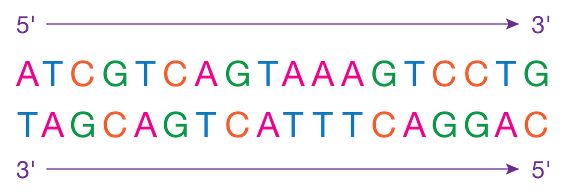On April 5, 2025, Dr. David R. Liu stood in the spotlight at the Barker Hangar in Santa Monica, California, to receive the Breakthrough Prize in Life Sciences—one of the most prestigious honors in science.
Dubbed the “Oscars of Science,” the Breakthrough Prizes were launched in 2012 by tech philanthropists including Sergey Brin, Mark Zuckerberg and Priscilla Chan, Yuri and Julia Milner and Anne Wojcicki. These prizes recognize groundbreaking achievements in life sciences, physics, and mathematics, with each laureate receiving a $3 million award—more than twice the amount of a Nobel Prize.

The winners are selected by panels of previous Breakthrough Prize recipients, ensuring peer-driven recognition. The annual ceremony brings together not only the best minds in science but also celebrities, filmmakers, and tech industry leaders, creating an uncommon crossover between pop culture and research, in an effort to bring more public attention as well as funding to scientific achievement.
Dr. Liu was honored for inventing base editing and prime editing, technologies that allow precise, programmable rewriting of DNA to correct mutations linked to genetic disease—without introducing double-stranded breaks. These tools have rapidly transitioned from the bench to the clinic, with at least 15 clinical trials currently underway worldwide targeting diseases like sickle cell anemia, T-cell leukemia, and others.
The Papers Behind the 2025 Prize
In Chen et al. 2021 (1), Liu’s team investigated the biological limits to prime editing efficiency, discovering that DNA mismatch repair (MMR) proteins can actively undo intended edits. Using CRISPR interference (CRISPRi) screens, they found that proteins like MLH1, MSH2, and PMS2 suppress prime editing and increase unintended indels.
To overcome this, they introduced the PE4 and PE5 systems (prime editing 4 and 5), which incorporate a dominant-negative version of MLH1 (MLH1dn) to temporarily suppress MMR. These new versions significantly enhanced editing—by an average of 7.7-fold in MMR-proficient cells—while reducing indels and off-target effects. When combined with a refined enzyme variant (PEmax) and specially designed pegRNAs (epegRNAs), the team achieved high editing precision across 191 edits in 7 different mammalian cell types.
Clinically relevant applications included correcting mutations in:
- CDKL5 for seizure-related disorders in patient-derived iPSCs,
- CXCR4 and IL2RB in T cells for immunotherapy and HIV resistance,
- PRNP for prion disease resistance.
This suite of tools now represents one of the most powerful precision genome editing platforms available.
To solve the delivery challenge of protein-RNA editing complexes, Liu’s team developed engineered virus-like particles (eVLPs)—nonreplicating particles that can deliver base editors as ribonucleoproteins (RNPs), not DNA (2). This bypasses the long-term expression and genomic integration risks associated with viral vectors like AAV.
Fourth-generation eVLPs demonstrated:
- 63% editing of Pcsk9 in mouse liver, leading to 78% drop in serum Pcsk9, a key marker for cholesterol regulation.
- Correction of a blindness-causing mutation (Rpe65 R44X) in mice, restoring visual function after a single subretinal injection.
- >95% correction of COL7A1 and Idua mutations in primary human and mouse fibroblasts, with minimal off-target activity.
These eVLPs were also engineered with optimized stoichiometry, protease-cleavable linkers, and envelope proteins to target different tissues like brain, retina, and liver. Perhaps most importantly, no BE-encoding DNA was detected in recipient cells, supporting the safety profile of these delivery tools.
Promega Tools in the Mix
Several Promega products supported these studies:
- PureYield™ Plasmid Miniprep System (Cat.# A1222) was used to isolate pegRNA and sgRNA plasmids in the Chen et al. study (1), to ensure high-quality DNA prep for transfections.
- CellTiter-Glo® Luminescent Cell Viability Assay (Cat.# G7570) was used in the Banskota et al. study (2) to assess cytotoxicity of eVLP treatment in both HEK293T and NIH 3T3 cells. The assays confirmed that editing had no negative impact on cell viability.
These tools contributed to the reproducibility and efficiency of Liu’s research, enabling scalable, clean workflows in both basic and applied experiments.
Beyond the Bench
Dr. David Liu is known for more than just inventing gene editing tools. He’s cofounded several biotechnology companies—including Beam Therapeutics, Prime Medicine, and Chroma Medicine—that are actively advancing base and prime editing toward clinical use. His ability to bridge rigorous academic research with translational innovation is a hallmark of his career.
Whether in a lab coat or a tuxedo at the Breakthrough Prize ceremony, Liu exemplifies the spirit of scientific ingenuity. His work continues to redefine what’s possible in genomics—and what’s treatable in medicine.
References
- Chen, P.J. et al. (2021) Enhanced Prime Editing Through Mismatch Repair Suppression. Cell 184, 5635–5652. [DOI: 10.1016/j.cell.2021.09.018]
- Banskota, S. et al. (2022) eVLPs: In Vivo Gene Editing Without DNA. Cell 185, 250–265.
[DOI: 10.1016/j.cell.2021.12.021]
Kari Kenefick
Latest posts by Kari Kenefick (see all)
- Base Editing Brilliance: David Liu’s Breakthrough Prize and Its Impact - May 28, 2025
- Neurons’ Role in FBP2 Regulation - October 24, 2024
- Fluorescent Ligands in Biological Research: Where We’ve Been, Where We’re Headed - June 27, 2024
